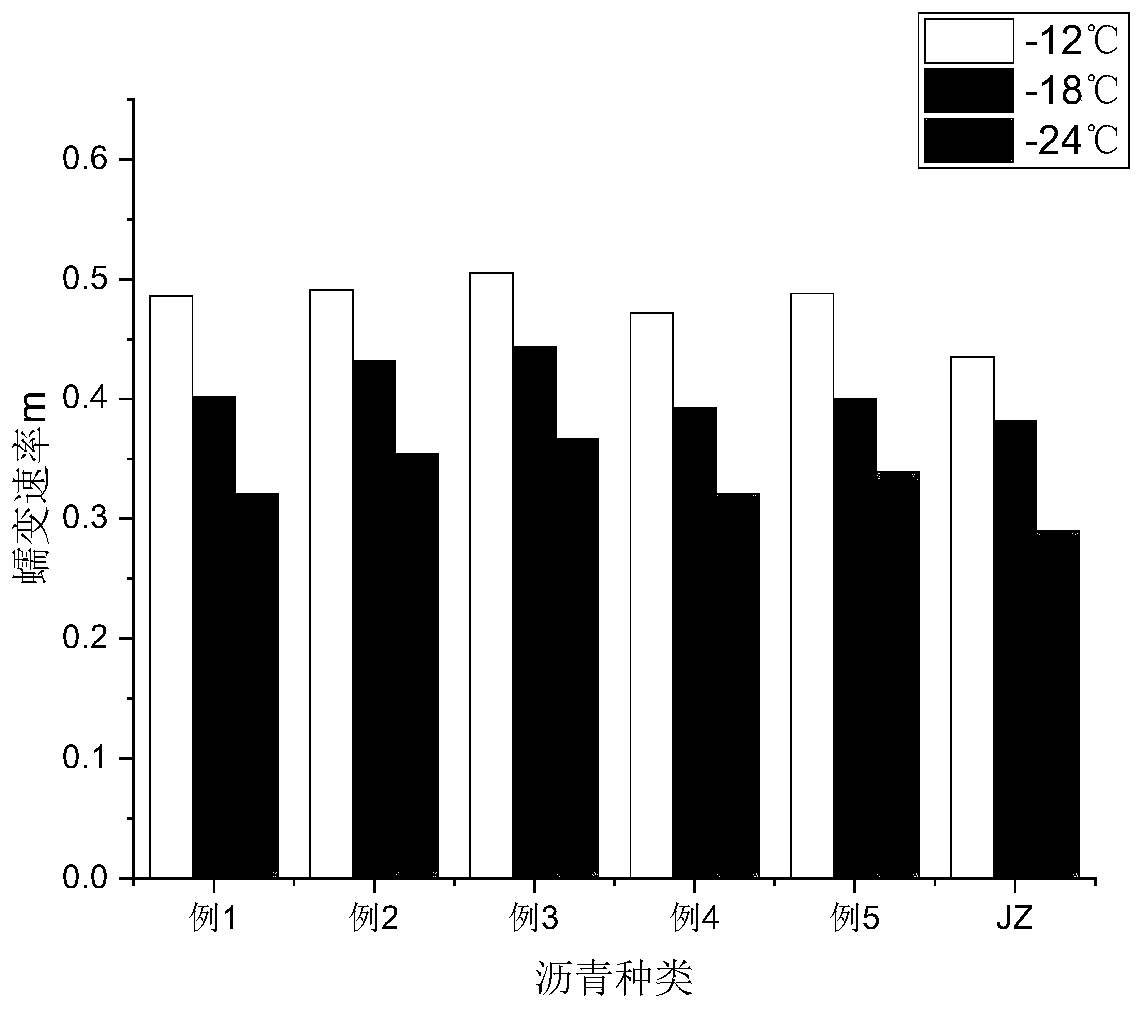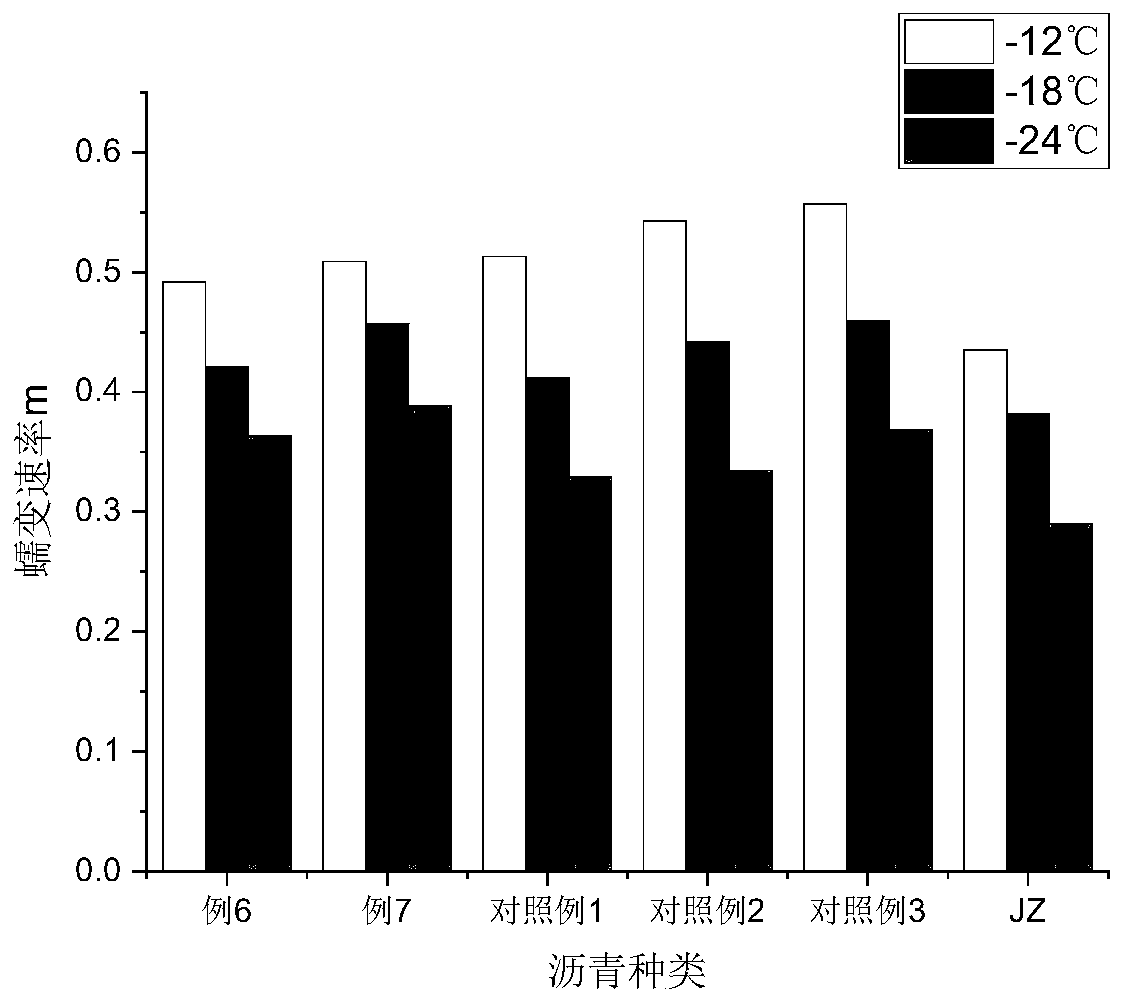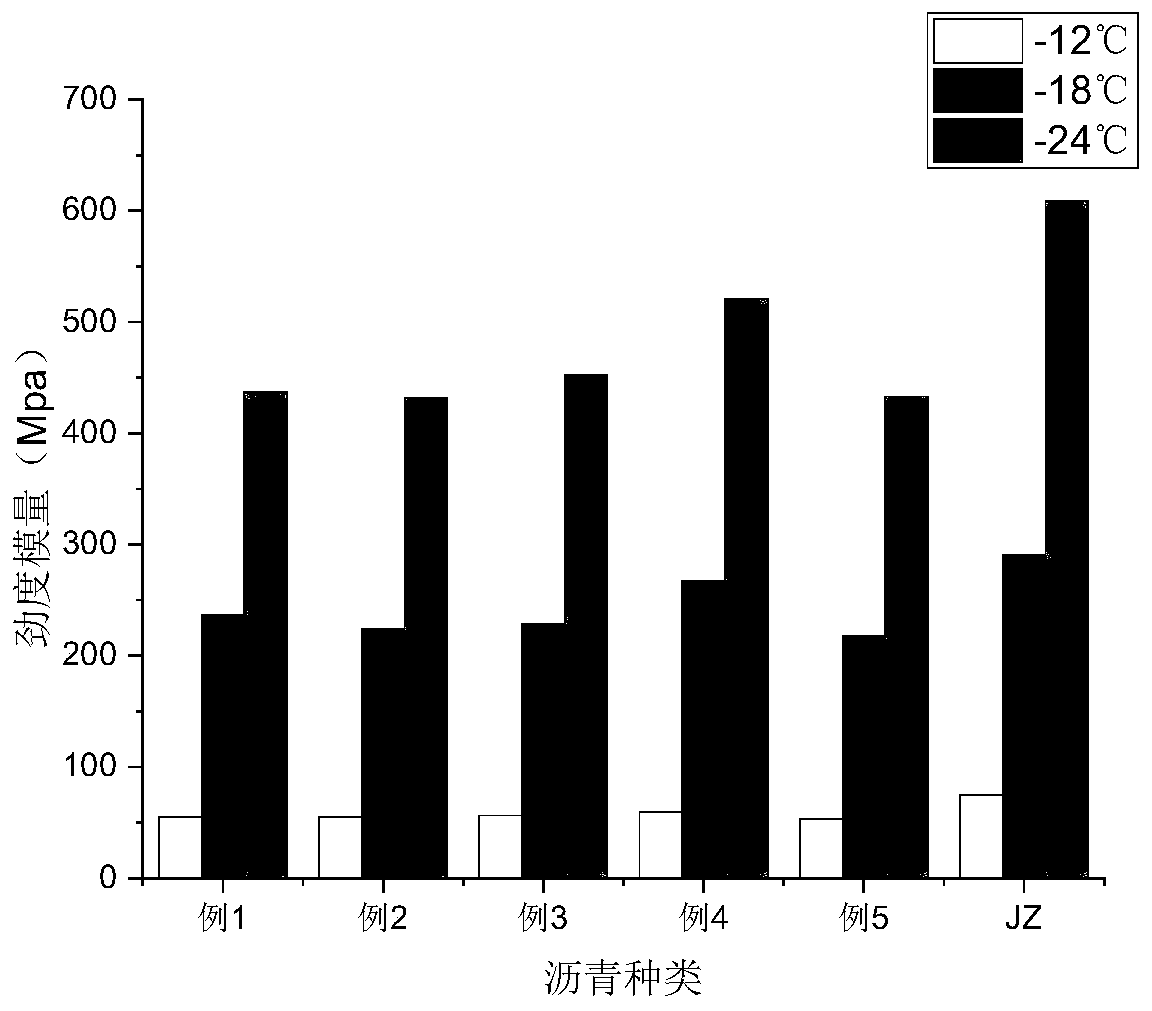Low-temperature-resistant nano modified asphalt and preparation method thereof
A nano-modified, low-temperature-resistant technology, used in building thermal insulation materials, building components, buildings, etc., can solve the problems of high temperature performance and elasticity decline, viscous components unable to resist long-term load, poor rutting resistance, etc., and achieve low temperature relaxation. Performance improvement, good three-dimensional spatial network structure, and the effect of strengthening the interface effect
- Summary
- Abstract
- Description
- Claims
- Application Information
AI Technical Summary
Problems solved by technology
Method used
Image
Examples
preparation example Construction
[0038] A kind of preparation method of the low-temperature-resistant nano-modified asphalt provided by the invention comprises the following steps:
[0039] Step 1, take base asphalt, nano silicon dioxide, rock bitumen, stabilizer, lime powder and liquid rubber LSBR according to the number of parts by mass; Wherein, described stabilizer is a kind of in mixture, sulfur and sulfur-containing organic compound or several kinds; the mixture is composed of 25 parts of sodium linoleate, 25 parts of diatomaceous earth and 50 parts of sulfur powder;
[0040] Step 2, heating the base asphalt to a molten state and keeping it warm;
[0041] Step 3. Set the constant temperature oil bath at 60°C, place the base asphalt in it, add liquid rubber LSBR into it after the temperature is constant, and stir manually. At this time, the modified asphalt should be a solid with strong viscous resistance. In the molten state, keep stirring manually at a constant speed for 20-30min, the mixing speed is ...
Embodiment 1
[0052] In this embodiment, the nano-modified asphalt raw materials are calculated according to the mass fraction: 100 parts of No. 90 road petroleum asphalt, 2 parts of LSBR with a molecular weight of 20,000, 1 part of lime powder, 2.5 parts of stabilizer, 17.5 parts of rock asphalt, and 3 parts of JH-silica;
[0053] Heat 500 parts of base asphalt to 165°C, add 2 parts of 2w-LSBR, and manually stir the oil bath at a constant temperature of 60°C at a constant speed of 200r / min. Strong solid-melt state, then stand at room temperature for 2h. Then heat the rubber-modified asphalt to about 145°C. At this time, the asphalt should be in a molten and flowing state. Add 17.5 parts of rock asphalt and 3 parts of JH-silica to the asphalt to obtain a blend, perform shearing and grinding, and stir the mixture evenly. At this time, the temperature is lowered to 155°C, and the high-speed shearing and stirring is performed for 10 minutes every 5 minutes. This cycle is repeated four times, t...
Embodiment 2
[0055] The nano-modified asphalt raw materials in this example are calculated according to mass fraction: 100 parts of No. 90 road petroleum asphalt, 3 parts of 20,000 molecular weight LSBR, 0.5 parts of lime powder, 2 parts of stabilizer, 15 parts of rock asphalt, and 4 parts of JH-silica.
[0056] Heat 500 parts of base asphalt to 160°C, add 3 parts of 2w-LSBR, and manually stir in an oil bath at a constant temperature of 70°C at a stirring speed of 195r / min, keep stirring at a constant speed, and then let it stand at room temperature for 2h. Heat the rubber-modified asphalt to about 137°C, add 15 parts of rock asphalt and 4 parts of JH-silica to obtain a blend, perform shearing and grinding, and stir evenly into the mixture. At this time, the temperature is raised to 165°C, every 10 minutes High-speed shearing and stirring for 10 minutes, this cycle is repeated four times, the highest shearing rate is 5500r / min, and the shearing time is 80mins; then add 2 parts of stabilizer...
PUM
 Login to View More
Login to View More Abstract
Description
Claims
Application Information
 Login to View More
Login to View More - R&D
- Intellectual Property
- Life Sciences
- Materials
- Tech Scout
- Unparalleled Data Quality
- Higher Quality Content
- 60% Fewer Hallucinations
Browse by: Latest US Patents, China's latest patents, Technical Efficacy Thesaurus, Application Domain, Technology Topic, Popular Technical Reports.
© 2025 PatSnap. All rights reserved.Legal|Privacy policy|Modern Slavery Act Transparency Statement|Sitemap|About US| Contact US: help@patsnap.com



